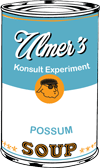

_________________
Introduction to Projects
KE is for anyone interested in adapting Humanities education, and pedagogy in general, to digital media. It is not the only way such an adaptation may be accomplished, but it may be in the mix for those taking into account apparatus theory (electracy names the digital apparatus). The curriculum and pedagogy are organized around the invention, design, and testing of konsult, the genre for learning in an electrate way. The rationale and related practices are inventoried in the following outline, to be unpacked and tested throughout KE.
1) Adopt a Disaster. The invention begins when egents (student konsultants) choose an ongoing disaster as the setting for their konsultation. The choice is based on punctum–a sting or trigger of emotion, a feeling of in/justice with respect to current events.
–Felt: Electracy constitutes a metaphysics of Desire, underwriting and augmenting across institutions the human capacity of attraction/repulsion (pleasure/pain). These passions include Thymos as well as Eros. A feeling of in/justice is addressed not as a “virtue” (a concept or ideal) but within the full range of passions, treated within literacy as até dramatized in tragedy (and comedy), probing the insight relating individual foolishness to collective calamity. Konsult seeks to do for the visceral order of passion what dialogue did for the intellectual order of reason.
—Attitude: Electracy does not compete with literacy as science or oraltiy as religion, but complements them. To the extent that prayer and engineering are sufficient for managing catastrophe, there is no need for konsult. Konsult intervenes when business as usual no longer suffices, disasters persist and increase. Konsult adopts its own attitude to disaster: egents “consult” (seek advice from, attempt to learn from) the disaster. They attempt to transate for themselves and the community the writing of the disaster (Blanchot).

Leave A Comment
You must be logged in to post a comment.